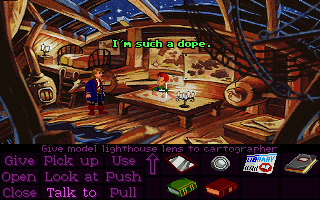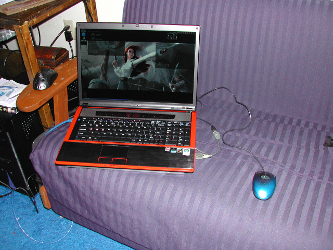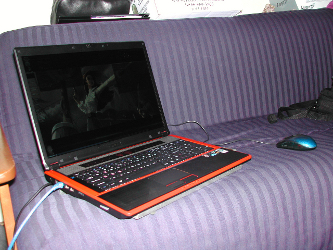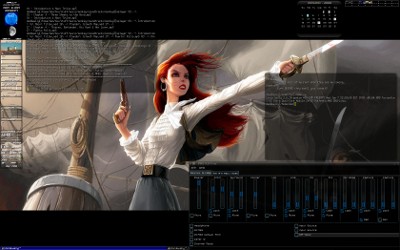



|
| Drivers/Notes: | ||
| · 2.2Ghz AMD Turion(tm) X2 Ultra Dual-Core Mobile ZM-82 Socket S1g2 CPU | Works | cpufrequtils is able to scale between 2.2Ghz, 1.1Ghz, and 550Mhz | ||
| · 17" LCD Display with 1680x1050 Native Resolution | Works | Nothing | ||
| · 4096MB DDR2 RAM | Works | Nothing | ||
| · 320GB Fujitsu SATA 7200 RPM HDD | Works | 'ahci' SATA driver | ||
| · Optiarc DVD RW AD-7560S | Works | Nothing | ||
| · ATI Mobile Radeon HD 3850 Graphics Chip | Works | I currently use the open source 'radeon' driver * Read Below * | ||
| · ATI SB700/Realtek ALC888 Audio | Works | Use the 'hda_intel' driver for sound with ALSA - be sure to include the ATI HDMI support options as well * Read Below * | ||
| · Realtek RTL8111/8168B PCI Express Gigabit Ethernet | Works | 'r8169' driver | ||
| · RaLink 2860 Wireless LAN | Works | There is a driver 'rt2860' which is located in the staging drivers in the kernel, as well as an VERY EXPERIMENTAL driver from rt2x00 * Read Below * | ||
| · Toshiba Bluetooth | Works | Use the default Bluetooth kernel options and BlueZ * Read Below * | ||
| · ENE0100 CIR (Infrared Receiver) | Works | 'ene0100' driver in LIRC * Read Below * | ||
| · JMicron SD Host Controller | Works | 'memstick' and 'jmb38x' drivers both needed | ||
| · JMicron 1394 (Firewire) | Works | Basic OHCI-1394 drivers | ||
| · Chicony USB Camera (Sonix 260) built-in webcam | Works | 'uvcvideo' driver |
|
00:00.0 Host bridge: Advanced Micro Devices [AMD] RS780 Host Bridge 00:02.0 PCI bridge: Advanced Micro Devices [AMD] RS780 PCI to PCI bridge (ext gfx port 0) 00:04.0 PCI bridge: Advanced Micro Devices [AMD] RS780 PCI to PCI bridge (PCIE port 0) 00:05.0 PCI bridge: Advanced Micro Devices [AMD] RS780 PCI to PCI bridge (PCIE port 1) 00:06.0 PCI bridge: Advanced Micro Devices [AMD] RS780 PCI to PCI bridge (PCIE port 2) 00:07.0 PCI bridge: Advanced Micro Devices [AMD] RS780 PCI to PCI bridge (PCIE port 3) 00:09.0 PCI bridge: Advanced Micro Devices [AMD] RS780 PCI to PCI bridge (PCIE port 4) 00:11.0 SATA controller: ATI Technologies Inc SB700/SB800 SATA Controller [AHCI mode] 00:12.0 USB Controller: ATI Technologies Inc SB700/SB800 USB OHCI0 Controller 00:12.1 USB Controller: ATI Technologies Inc SB700 USB OHCI1 Controller 00:12.2 USB Controller: ATI Technologies Inc SB700/SB800 USB EHCI Controller 00:13.0 USB Controller: ATI Technologies Inc SB700/SB800 USB OHCI0 Controller 00:13.2 USB Controller: ATI Technologies Inc SB700/SB800 USB EHCI Controller 00:14.0 SMBus: ATI Technologies Inc SBx00 SMBus Controller (rev 3a) 00:14.1 IDE interface: ATI Technologies Inc SB700/SB800 IDE Controller 00:14.2 Audio device: ATI Technologies Inc SBx00 Azalia (Intel HDA) 00:14.3 ISA bridge: ATI Technologies Inc SB700/SB800 LPC host controller 00:14.4 PCI bridge: ATI Technologies Inc SBx00 PCI to PCI Bridge 00:18.0 Host bridge: Advanced Micro Devices [AMD] Family 11h HyperTransport Configuration (rev 40) 00:18.1 Host bridge: Advanced Micro Devices [AMD] Family 11h Address Map 00:18.2 Host bridge: Advanced Micro Devices [AMD] Family 11h DRAM Controller 00:18.3 Host bridge: Advanced Micro Devices [AMD] Family 11h Miscellaneous Control 00:18.4 Host bridge: Advanced Micro Devices [AMD] Family 11h Link Control 01:00.0 VGA compatible controller: ATI Technologies Inc Mobility Radeon HD 3850 01:00.1 Audio device: ATI Technologies Inc Radeon HD 3870 Audio device 04:00.0 Network controller: RaLink RT2860 06:00.0 Ethernet controller: Realtek Semiconductor Co., Ltd. RTL8111/8168B PCI Express Gig abit Ethernet controller (rev 02) 07:00.0 FireWire (IEEE 1394): JMicron Technologies, Inc. IEEE 1394 Host Controller 07:00.1 System peripheral: JMicron Technologies, Inc. SD/MMC Host Controller 07:00.2 SD Host controller: JMicron Technologies, Inc. Standard SD Host Controller 07:00.3 System peripheral: JMicron Technologies, Inc. MS Host Controller 07:00.4 System peripheral: JMicron Technologies, Inc. xD Host Controller |


|
Old 'historic' update that is now totally worthless as it doesn't work: Here is my disclaimer: I take NO responsibility for what you do to your own computer. If you follow these instructions you are doing so AT YOUR OWN RISK. If something breaks, it is YOUR fault and NOT mine. Now with that being said, I will continue :) I downloaded the firmware upgrade for the drive at DVD RW AD-7560S Firmware Upgrade Program Version SS03. Unfortunately it is for a Sony VAIO computer and nothing else. I figured that I would give it a shot anyways. For the humor side of it, my track record for what happened is as follows: :) I first attempted to just run the EP0000164211.exe executable through Windows as was instructed by the Sony VAIO website. A dialog box popped up saying that it would first eject the drive and then update my old firmware version 'SX01' with firmware version 'SS03' after I clicked update. Unfortunately after clicking update, the program just shut off and that was that, nothing. Foruntunately the drive still worked so I knew that it hadn't done anything. From there I knew it was time to start messing around with the file itself. Obviously it was not going to update it as it was looking for a drive with SS firmware (Sony's) and not SX (MSI's). My dad had told me of the same experience he had with a drive of his a while back and how he tricked the updater by changing the updated firmware's name with a hex editor. I figured what the heck I will give it a try. Loading up my favorite command-line hex editor shed (simple hex editor), I searched the executable for the string 'SS03' and found one instance of it and changed it to 'SX03'. I was hoping that the installer would now compare the old firmware with 'SX' instead of 'SS'. I filed it away and rebooted back into Windows. This time, running the executable promptly gave me an error saying that it could not extract any files because the executable was now corrupt. Dang. What could this mean? I sat for a second and thought that maybe this executable was just a self extracting archive; it said that it was trying to extract something. I redownloaded the file and tried to extract it manually and sure enough, a file named Optiarc-AD-7560S-SS03-Web.EXE was exctracted. I tried running the file with Wine under Linux just to see what would happen, (un)fortunately it said that it could not find the corresponding hardware, but it DID say that if it did it would update it with firmware version 'SS03'. I figured this was good as it would now allow me to test my edited executable and would also ensure that I wouldn't wipe out my drive on accident if I messed anything up while editing. With this new boost of confidence I loaded the new file with shed and searched for 'SS03' again and found six different instances of it within the file. I decided to once again say the heck with it and change all six, hoping that would take care of everything. I filed it away and ran it with Wine again and sure enough it failed finding the drive, but this time it said that it would be updating with firmware version 'SX03'. I was finally getting somewhere. Rebooting once again, I took a deep breath and ran my newly edited executable and crossed my fingers. The same dialog window popped up (now with version 'SX03' in it). I clicked update and amazingly enough the drive ejected just as it said it would, and a progress bar on the bottom started to prorgess to the right, it was working! After a minute or so, another window popped up saying that the update was complete and to restart my computer. I restarted and booted into Linux and ran 'hdparm -i /dev/hda' and saw that sure enough, the drive was now running firmware version SS03. Finally, the new firmware was on there. From there it was off to load my Gentoo Live CD and see what happened. |

 |

|

|

